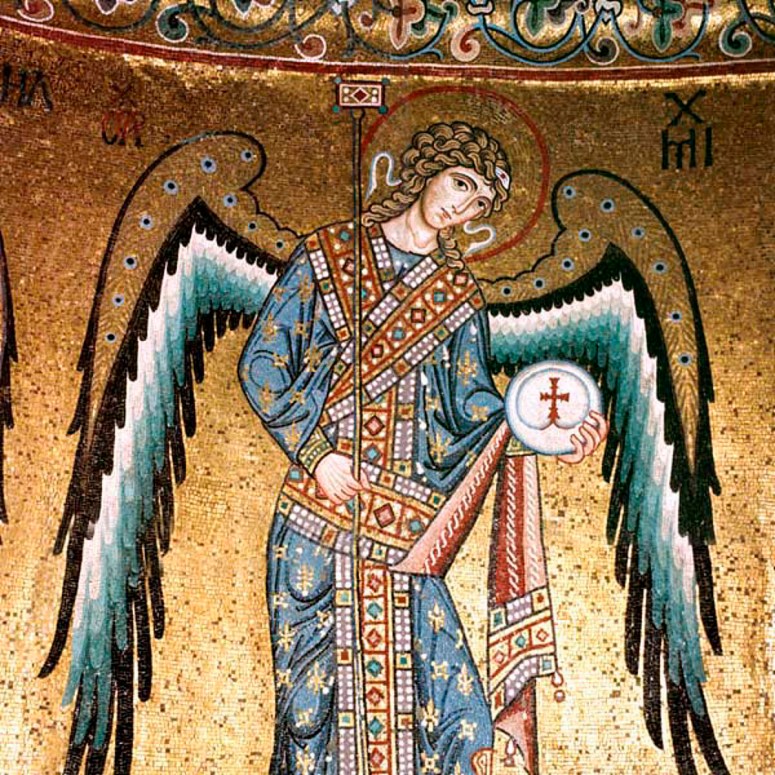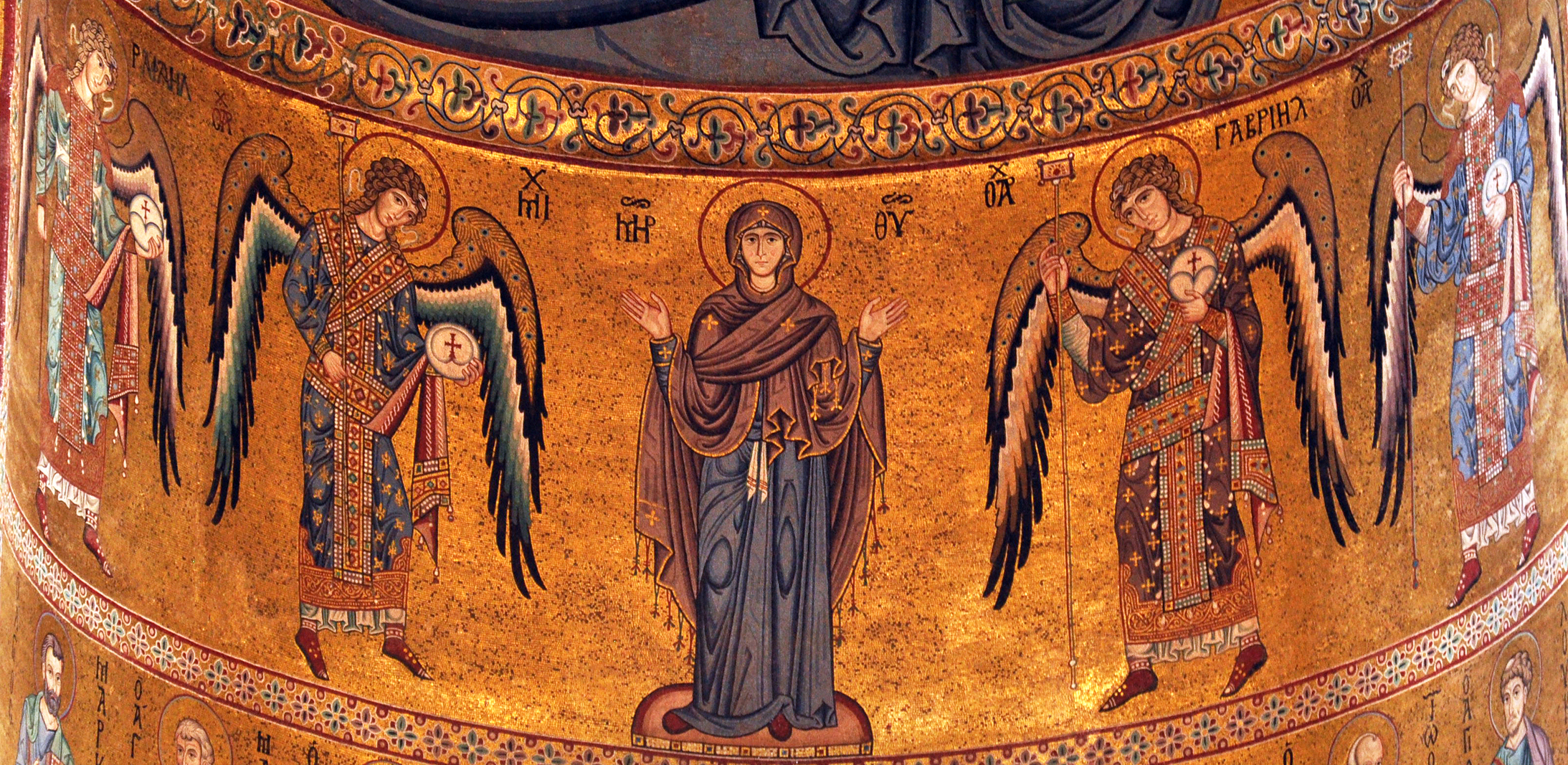“Ecce ego mitto angelum meum ante faciem tuam” (Marcus, 1: 2)
[Behold, I send my messenger before thy face]
There are some splendid representations of angels from different orders in the presbyterium area of the Norman Cathedral in Cefalù, Sicily (Duomo di Cefalù). They were made in mid-12th century by unknown masters in the technique of mosaic, come from Constantinople, and who adapted their traditional Byzantine style to an architectural structure that was of Northern European origin. The works were completed before 1170 and are considered the finest Byzantine mosaics in Italy; comparable to the very best remaining in Constantinople (formerly Byzantium; now Istanbul) itself.
Among the four Archangels depicted on the apse, I present here two: Michael and Gabriel. They are located in the upper tier of the apsidal wall, at both sides of the Virgin Mary, under the magnificent Christ Pantocrator at the semi-dome –which I will show as well a little below.
1- Archangel Michael (dressing a royal blue tunic emblazoned with gold symbols):
–

–
2- Archangel Gabriel (dressing a light purple tunic, also stamped in gold):
–

–
(Currently I lack photos of Rafael and Uriel fine enough to match these; but you may see them –and also the Santa Madonna– in the wider view at the end of the post.)
The decoration of the cross-vaulted ceiling depicts four six-winged Seraphim and four Querubim (two-winged):
–

“Ego sum lux mundi – qui sequitur me non ambulabit in tenebris sed habebit lucem vitae” (Ioannes, 8: 12)
[I am the light of the world – who follows me will not wander in the darkness but will have the light of life]
The chief figures, that of the Christ Pantocrator and the Virgin Mary, are also clothed partially in blue, and both of them given again a great luminosity by the background of gold tiles. The work is indeed of the highest order, having great elegance in the draping of the robes and sensitivity in the faces and gestures.
Of course, the dominant character of the decorative scheme is the Pantocrator, portrayed on the semi-dome with his right hand raised in benediction. In his left hand he carries the Gospel of John, in which can be read, in Greek and Latin: “I am the light of the world, who follows me will not wander in the darkness but will have the light of life” (John, 8:12).
–

–
Right below, on the apsidal wall, stands Mary, both her hands raised in prophecy or prayer, flanked by the four Archangels; from Rafael at the far left to Uriel at the right:
–
–

–
These are more general views of apse and ceiling in the Duomo di Cefalù:
–
–
To anyone interested in Medieval art, I heartily recommend a very fine post on my sister’s blog (and mostly written by her) about Catalan Early Romanesque:
Catalan Romanesque Art – World heritage and cradle of our national identity
(Among many other works (frescoes and sculptures) you may see there another most impressive six-winged many-eyed seraphim; a century older, but similar to those on the cross-vault of Cefalù’s Duomo.
No unauthorised copying or redistribution. All Rights Reserved.



![Pictures of Cefalu Cathedral, Sicily - Stock Photos Byzantine mosaics of Christ , Mary and the Apostles at the Cathedral, Duomo of Cefalu [Cefaœ] Sicily](https://i0.wp.com/linusfontrodona.com/wp-content/uploads/2017/11/jesus-christ-cefalu-cathedral-sicily.jpg?w=309&h=458&ssl=1)
These are breathtaking! Thank you for sharing!
LikeLiked by 2 people
You’re most welcome, Thea 🙂 Thanks to you for the comment ❤ (And yes, these old angels are beautiful and impressive.)
LikeLiked by 1 person
Oh my…. Mosaics are some of my favorites! These are so powerful, and give me some hope that I think we all need now. Can you imagine loving a craft so much to create such beauty?
It seems to me that Mary is sad. It might be the style of the feminine in this – it might be the knowledge of what her son undergoes, but there’s something there that tugs at my heart.
LikeLiked by 2 people
Hi, my friend 🙂 I’m so glad you liked this (and that you truly appreciate old Byzantine mosaics) ! ❤ ✨
I agree with your point; most iconography from the Eastern Christianity has this air of hieratism, unnaturality, severity and sometimes sadness. Contemporary Russian icons have still these looks. Thanks again for your kind feedback ! *A Big Hug*
LikeLike